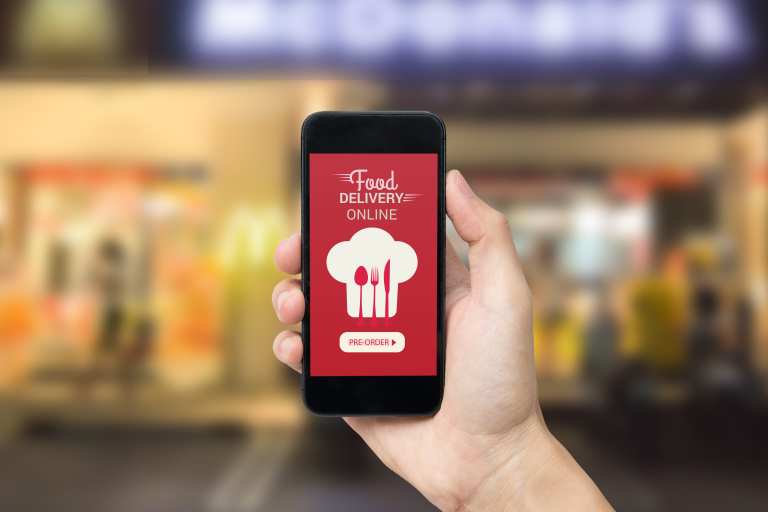Along with taking food orders from various eateries, mobile order aggregators are taking something else — flak — over commissions and fees that run as high as 30 percent of order value. That, and things like adding restaurants to delivery platforms without their knowledge. State governments are drawing a bead on DoorDash, Grubhub, Seamless and others over these issues, and companies are preparing for new legislation that some will find impossible to digest.
And this is all before the COVID-19 pandemic disrupted the world.
Important trends like the aggravation with aggregators are defined in the March 2020 Mobile Order-Ahead Tracker®, a Kount collaboration. This is year that delivery hits $10 billion as an industry, meaning that it’s poised to officially surpass dine-in. End of an era to say the least, but there’s decidedly no weeping inside the $27 billion mobile order-ahead (MOA) sector.
The March 2020 Mobile Order-Ahead Tracker® is particularly interesting as it stands as a benchmark of MOA fortunes before the coronavirus completely upended American life. As that crisis was invisibly manifesting, MOA operators were obsessing over whether to build their own ordering apps, or to sign on with one of hyper-efficient MOA specialists.
App Do-Over … or Don’t?
To paint a more vivid portrait of life in the MOA space, PYMNTS profiled popular Mexican fast-casual brand Qdoba in the latest Tracker, after the chain completed a top-down revamp of its own MOA app.
Advertisement: Scroll to Continue
Responding to guest feedback that the old app was hard to navigate and confusing, Qdoba did a data-driven redesign that focuses on the customer at every stage of the process.
“We’re really focused on behavioral data and understanding why our guests come in,” Qdoba’s director of digital experience and media, Adam Fox, told PYMNTS. “How frequently do they visit? What do they order? What new products might they be interested in? We’re confident there’s an opportunity to increase frequency by analyzing that activity and delivering content and offers that are more relevant to the individual user.”
Many restaurant operators are struggling with this same decision (investing in branded apps vs. using premade aggregator apps), and it’s a serious discussion within the industry. “The biggest challenge in the industry at the moment is the fact that, while [aggregators] deliver a lot of traffic to our restaurants, we’re also battling them for customers,” Fox told PYMNTS. “I think the biggest thing that we will continue to work through with third-party [ordering] is the balance of the traffic that they provide and our desire to own the customer relationship and the profitability of those transactions.”
Worth the Trouble
While the March 2020 Mobile Order-Ahead Tracker® documents widespread MOA disruptions in China as the result of the coronavirus, this update is more concerned with competition and regulation, such as California’s Assembly Bill 2149 that would order third-party MOA apps to cough up the data they’ve been collecting at least annually, if not monthly.
It’s worth the trouble. The latest MOA Tracker is filled with news of this lucrative ecosystem, like the success of Yum! Brands, owner of KFC, Pizza Hut and Taco Bell. “All three have seen increased sales over the past year,” the report states, “[with] Taco Bell by 13 percent, KFC by 11 percent and Pizza Hut by 7 percent. Yum! Brands CEO David Gibbs has attributed these successes to digital ordering’s growing popularity.”




